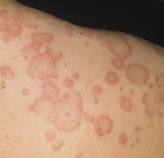Have you ever had very itchy, reddish swellings on your skin, pretty much like a rash from the stinging nettle plant? This condition is called urticaria or nettle rash. The Latin word for nettle is urtica. Nettle rash usually varies in size and shape. It lasts up to 24 hours and is very itchy. This may occur once or repeatedly.
When you experience nettle rash, it is sudden and very irritating. You usually get so occupied by the itching that you are not able to do your normal daily activities anymore. This not do you good. What do you have to know about nettle rash so that you may be able to know what to do? Read on and find out!
1. Triggers
 It is said that there are no obvious causes in nine percent of nettle rash cases.This type of rash usually comes out because of a reaction to an allergy. However, there are various triggers that bring about the symptoms of nettle rash:
It is said that there are no obvious causes in nine percent of nettle rash cases.This type of rash usually comes out because of a reaction to an allergy. However, there are various triggers that bring about the symptoms of nettle rash:
- Food allergies or allergic reactions to seafood, strawberries, but, and eggs.
- Spores or pollen
- Reaction to antibiotics, ACE inhibitors, and NSAIDs
- Bacterial, parasitic, and viral infections
- Insect bites
- Direct contact with certain plants
- Direct contact with certain animals such as jellyfish
- Reaction to stimuli like pressure, water, sweat, cold, warmth, and sunlight
- Reaction to perfumes, tar, nickel, and colouring
In allergies, your body’s cells release histamine. This chemical dilates the blood vessels and makes them more permeable. This makes the fluids seep out of the skin. The nettle rash is produced because of the edema or the accumulation of fluids under the skin. The rashes may be followed by swelling in various parts of your body. A type of edema that involves the genitalia, hands, tongue, larynx, eyes, and lips is the angionurotic edema.
2. Symptoms
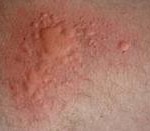 Nettle rash is initially manifested by a spot of itchiness on your skin. This tiny spot then develop into inflamed blisters called weals in just a matter of minutes. The blisters differ in size. A few hours later, the blisters vanish but reappear in another spot.
Nettle rash is initially manifested by a spot of itchiness on your skin. This tiny spot then develop into inflamed blisters called weals in just a matter of minutes. The blisters differ in size. A few hours later, the blisters vanish but reappear in another spot.
3. Types
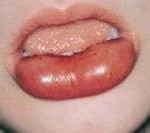 Here are the following types of nettle rash that you should be aware of:
Here are the following types of nettle rash that you should be aware of:
- Acute
When the nettle rash is acute, it starts within the first hour of allergen exposure. This makes it easier for the cause to be determined. Each time you are exposed to the allergen, you will exhibit the familiar symptoms. Acute nettle rash often lasts for just about 24 – 48 hours and will not exceed six weeks. Medical consult doesn’t need to be sought especially when the cause is immediately found. But if the reaction in severe, it is best to call your doctor. Acute nettle rash can be non-allergic or allergic. Both adults and children are susceptible to recurring nettle rash attacks.
- Chronic
Chronic nettle rash cases involve long term treatment and are usually need complicated treatment. Your general practitioner or a dermatologist would be the best professional to help you go through with this. It is said that chronic nettle rash is rare. Idiopathic urticaria is how chronic nettle rash is called when there are no apparent causes. Ninety percent of cases are found like this. For the ten percent that’s left, substances like perfume or nickel cause the allergy. This type of urticria may be associated with an underlying disease. Even so, you don’t have to be worried because it is very treatable. Most cases just disappear in six months. But there are times when chronic nettle rash is treatment resistant and may go on for years .
- Angioneurotic edema (hereditary)
This is a condition that is passed on to the next generation. Angioneurotic edema is a condition wherein there are rashes and swelling around the mouth, hands, and eyes.
4. Diagnosis
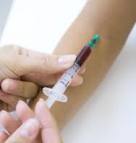 Through blood samples and skin tests, proper diagnosis of the nettle rash can be made. Just make sure that you tell your doctor the history of your symptoms.
Through blood samples and skin tests, proper diagnosis of the nettle rash can be made. Just make sure that you tell your doctor the history of your symptoms.
5. Complications
 If your nettle rash is not managed or treated, you will have sleep deprivation because of the irritation and itchiness. If you acquire angioneurotic edema, immediate treatment is needed.
If your nettle rash is not managed or treated, you will have sleep deprivation because of the irritation and itchiness. If you acquire angioneurotic edema, immediate treatment is needed.
6. Prospects
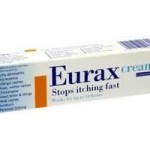 In acute cases of nettle rash, when the causes are avoided, the symptoms disappear. Various medications are available nowadays that help relieve the symptoms of nettle rash, particularly angioneurotic edema.
In acute cases of nettle rash, when the causes are avoided, the symptoms disappear. Various medications are available nowadays that help relieve the symptoms of nettle rash, particularly angioneurotic edema.
7. Medications
 Basically, steroids and antihistamines are commonly used to treat nettle rash. Steroids are specifically used for angioneurotic edema. On the other hand, antihistamines relieve itchiness and reduce the intensity of the rash until it disappears. You can avail of this medication in the form of injections and tablets. One significant side effect of antihistamines is drowsiness. This is because it is usually prescribed to be taken at night, especially when the patient finds it difficult to sleep.
Basically, steroids and antihistamines are commonly used to treat nettle rash. Steroids are specifically used for angioneurotic edema. On the other hand, antihistamines relieve itchiness and reduce the intensity of the rash until it disappears. You can avail of this medication in the form of injections and tablets. One significant side effect of antihistamines is drowsiness. This is because it is usually prescribed to be taken at night, especially when the patient finds it difficult to sleep.
Make sure that you immediately seek your doctor’s help when you experience the symptoms. When medications are given to you for your case of nettle rash, always take them as directed.
